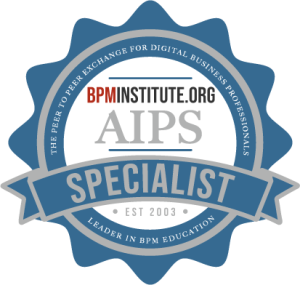Home / Resources
Resources
Discover a Wealth of BPM Knowledge and Expertise at BPMInstitute.org!

Project Management: The Deja-Vu Problem
Too often in Project Management roles, we experience a sense of deja-vu: the unshakeable feeling that we’ve been here before and we’ve done this already. After we successfully complete projects, we charter new ones with a never-ending focus on continuous improvement. However, astute Project Managers often start to notice that these new projects are re-runs of the same patterns. Teams face the same obstacles, solve the same problems, and even re-trace the footsteps of earlier projects that didn’t “stick” after the previous project team had declared victory.
The conversation between friends that follows below will be familiar to Project Managers who recognize these patterns. I hope that by sharing our conversation about Business Process Management, you will also have success in disrupting the deja-vu problem we faced.

Hyperautomation – Are You Ready to Adapt?
The business world is about to enter another cycle of major change. This cycle will definitely change every part of business operations and the way companies interact with customers. The driving forces are not only automation and advance technology but most importantly, the pace at which both are changing.
The question is “does your company have the ability to take advantage of the hyperautomation revolution that has started?”
You have all heard of hyperautomation, hyper digitalization, and hyper technology revolution. By whatever name it is called in your organization, it is here and it is fast becoming a force you will need to reckon with.

Hyperautomation, Disruption, Continuous Business, and Digital Transformation are the Foundations of the Future
We have entered the age of hyperautomation – the release of advanced new technologies is constant and is changing the world as we know it today. These advances are in automated capabilities, in automated tools, and in wonderful new technologies that will affect our lives in untold ways. These untold ways are the opportunities we all have before us – if we are bold enough to innovate.
We are seeing wonders released almost every day and mature into capabilities that are changing how we live and play. Holographic imaging and robot surgeons are just the tip of the technology iceberg. Autonomous cars and trucks are starting to be used and voice interaction will soon support AI interaction as computers think independently to do things for us.

Operational Excellence 2.0: Invented in Silicon Valley?
I have spent the last 30 years evangelizing about the importance of well understood processes. We formalized the UPN (Universal Process Notation) approach which was based on SSADM. And we built a process mapping software vendor in the UK which was acquired by US process automation player and I now live in San Francisco where I have become an avid student of “the Silicon Valley way”.
After a year or two off, I got 3 of the founders back together and we have launched a company which aims at helping the Fortune 5Million, not just the Fortune 500, to do a better job of systems implementation. At the heart of that is better process documentation. And the sweet spot is Salesforce.com implementations.
Why? Because it is a massive market that has an unmet and growing need. We can make a big difference helping every company achieve and maintain operational excellence. And because we can.
Growing pains

Coming out of the Pandemic Business Slowdown
…or Maybe Shutdown Would Describe it Better: A Case Study
There is no consistency to the business shutdown between states, counties, industries or anything I can think of. Each governor handled it differently and most of the time the rules really didn’t make sense. But one thing is clear, the governors are not through yet as each listen to their own physicians and advisors- each of whom have their own ideas. It seems that with each spike, large or small, the lockdown is back on. And we may be heading into another lockdown as winter approaches.
This article is not about politics or the Pandemic itself. It is about the yo-yo response that companies have to live with and if possible, not only stay in business but find a way to thrive – and some are thriving while others die.
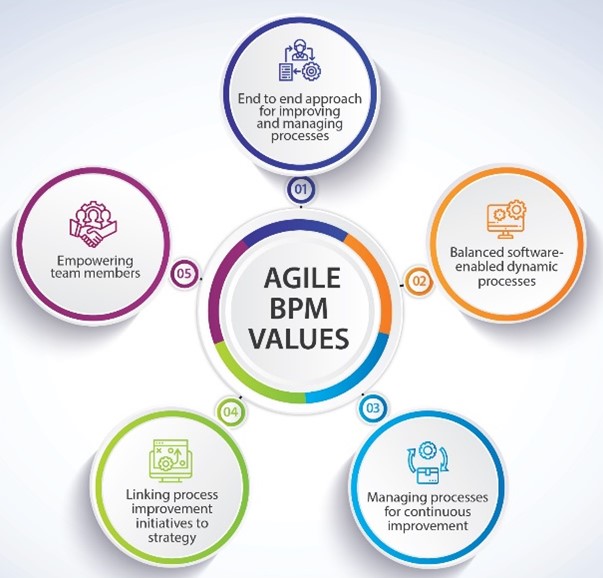
Introducing Agile BPM
Here at BPMInstitute (BPMI), we’ve taught agile business analysis and business process management courses to numerous Business Analysts and BPM practitioners. A frequent question from our students continues to be – can we apply agile to business process management?
The answer is YES! By combining agile with BPM, you can create agile BPM to benefit your organization with more efficiency, consistency, and quality in your BPM initiatives.
Most importantly, you will deliver value to your process users more frequently.
This new methodology is created by applying the agile values, principles, and concepts to BPM initiatives and projects. The agile software development life cycle becomes the agile BPM delivery life cycle. Agile ceremonies and techniques are adapted for use in BPM; BPM techniques benefit from having agile concepts applied to them as well.

Business Process Management in a Digital World – Trends and Predictions
Most organizations have started or at least planned digital transformation initiatives [12]. New digital tools are available with increasing regularity – and many of them have the potential for a major impact on business processes. Hyper-Automation has become a reality which changes the way business processes are organized and executed significantly. However, only a small number of organizations have their business processes sufficiently under control to realize the full potential of new digital technologies and the related transformation [7] [3]. Appropriate business process management (BPM) capabilities, delivered through the process of process management, have a significant impact on the value achieved through digitalization initiatives [2]. Digital transformation continues to shape the BPM Discipline. Here are four key trends and predictions:

Article Series Part 10- Competency Centers: Digital Transformation Debts post-Covid-19
Editor’s Note: The DBizInstitute is excited to share this article, written by Dr. Setrag Khoshafian, with our community and in advance of his new book release. Keep an eye on our website as we share additional articles in the coming months written by Setrag, as well as a pending Meet the Author webcast to discuss his new book ‘How to Alleviate Digital Transformation Debt’ expected to air Fall 2021. This article was originally published on CognitiveWorld.com on January 30, 2021.
This is the 10th and final installment in the article series on Digital Transformation Debt post-Covid-19. It is the fitting conclusion for enterprises that face the transformational challenges of Covid-19.

Hyperautomation – Ballyhoo or Best Practice?
Gartner introduced the concept of Hyperautomation in 2019 as the key trend for 2020. What is it? Well, it’s simply the combination of different technologies to carry out the end-to-end automation of an organization’s processes by integrating technologies such as robotic process automation (RPA), intelligent business process management (IBPM), machine learning, and artificial intelligence (AI).
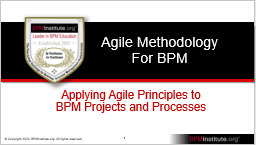
Agile BPM: How to apply Agile Concepts to Business Process Management and Business Analysis
Join Gregg Rock and our lead Agile instructor, Joanne Carswell, as they introduce a new methodology – Agile BPM.
This webcast discusses five agile concepts that can be directly applied to process improvement and management as well as to business analysis initiatives. We’ll discuss how to adapt these agile concepts to provide value more frequently to the process users. You will leave this session with tangible action items as well as a better understanding of agile. A more in-depth view of this concept – infusing BPM with agile – may be found in the new curriculum offered by BPMInstitute.org.We will also provide a brief overview of each of the courses in our Agile BPM Certificate Program:
Agile Methodology for BPM: Discusses how to apply agile concepts, principles, and standards for members of Business Process Management including analysts, project managers, and leaders. Providing value more frequently in BPM is emphasized.

Principles of a Well-Architected Solution
A Well-Architected Solution Begins with the Business
As a member of the business architect community, you already appreciate the importance and value of the discipline. The article below provides some additional perspectives on how to refocus the cloud migration conversation on the business side of the solution. Doing so will improve the success of your technology counterparts.

Article Series Part 9- Blockchain Decentralization: Digital Transformation Debts post-Covid-19
Editor’s Note: The DBizInstitute is excited to share this article, written by Dr. Setrag Khoshafian, with our community and in advance of his new book release. Keep an eye on our website as we share additional articles in the coming months written by Setrag, as well as a pending Meet the Author webcast to discuss his new book ‘How to Alleviate Digital Transformation Debt’ expected to air Fall 2021. This article was originally published on CognitiveWorld.com on January 9, 2021.
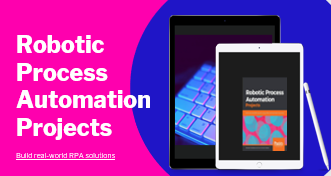
Meet the Author: Nandan Mullakara & Arun Kumar Asokan, Robotic Process Automation Projects
In this webcast, authors Nandan Mullakara and Arun Kumar share insights into their new book, ‘Robotic Process Automation Projects: Build real-world RPA solutions using UiPath and Automation Anywhere’ (Packt Publishing, 2020). Tune in as they share with the audience the array of different step-by-step real-world projects their book contains.
This project-based guide will help you progress through easy to more advanced RPA projects. You’ll learn the principles of RPA and how to architect solutions to meet the demands of business automation, along with exploring the most popular RPA tools – UiPath and Automation Anywhere. This RPA book is for enterprise application developers, software developers, business analysts, or any professional who wants to implement RPA across various domains of the business.
Special Offer for Our Members!

Article Series Part 8- IoT Connectivity: Digital Transformation Debts post-Covid-19
Editor’s Note: The DBizInstitute is excited to share this article, written by Dr. Setrag Khoshafian, with our community and in advance of his new book release. Keep an eye on our website as we share additional articles in the coming months written by Setrag, as well as a pending Meet the Author webcast to discuss his new book ‘How to Alleviate Digital Transformation Debt’ expected to air Fall 2021. This article was originally published on CognitiveWorld.com on December 14, 2020.

Using Hackathons to Create Process-Centric Teams
Early on at Process Street, we knew we wanted to be a more process-centric team. Certain processes had poor adherence (rendering them ineffective), and new processes were only being designed by management. As a result, these processes weren’t being documented efficiently. Without the correct documentation, teams didn’t know how to use them – or even that these processes existed.
We needed to improve how our systems were constructed, and how our infrastructural tools were used.
“Col sporcar si trova”: Creating processes within calculated disarray

Transforming the Customer Relationship Culture in Manufacturing
Editors Note: DBizInstitute is excited to share this article, written by Dr. Setrag Khoshafian, with our community and in advance of his new book release. Keep an eye on our website as we share additional articles in the coming months written by Setrag, as well as a pending Meet the Author webcast to discuss his new book ‘How to Alleviate Digital Transformation Debt’ expected to air Fall 2021. Be sure to pre-register! This article was originally published on CognitiveWorld.com on December 11, 2019.

Article Series Part 7- Customer Experience Optimization: Digital Transformation Debts post-Covid-19
Editor’s Note: The DBizInstitute is excited to share this article, written by Dr. Setrag Khoshafian, with our community and in advance of his new book release. Keep an eye on our website as we share additional articles in the coming months written by Setrag, as well as a pending Meet the Author webcast to discuss his new book ‘How to Alleviate Digital Transformation Debt’ expected to air Fall 2021. This article was originally published on CognitiveWorld.com on November 18, 2020.

Collaboration- More than Meets the Eye
Has your company adopted collaboration as part of its culture? If it has, you have a good start – great first step.
But experience on transformation projects had shown me that collaboration is more than agreeing to send a representative to group meetings. It is also more than having managers attending these meetings so decisions can be made. Collaboration is much more than simply talking or attending a meeting and ignoring what you don’t like.

What has Innovation to do with Business Process Management – Especially in our Digital World?
This question matters – now more than ever
Companies face daily new opportunities and threats in our fast changing digital world. Organizations have to establish a management discipline to integrate agile innovation into their business and realize the full potential of digital technologies and the power of the internet. The Discipline of Business Process Management (BPM) addresses this need. Correctly set up, it establishes an agile and focused innovation capability in an organization. The BPM-Discipline produces innovation in form of new impactful processes and organizes the way other innovations are developed and rolled out. It is crucial for getting best value from digital transformations [1].
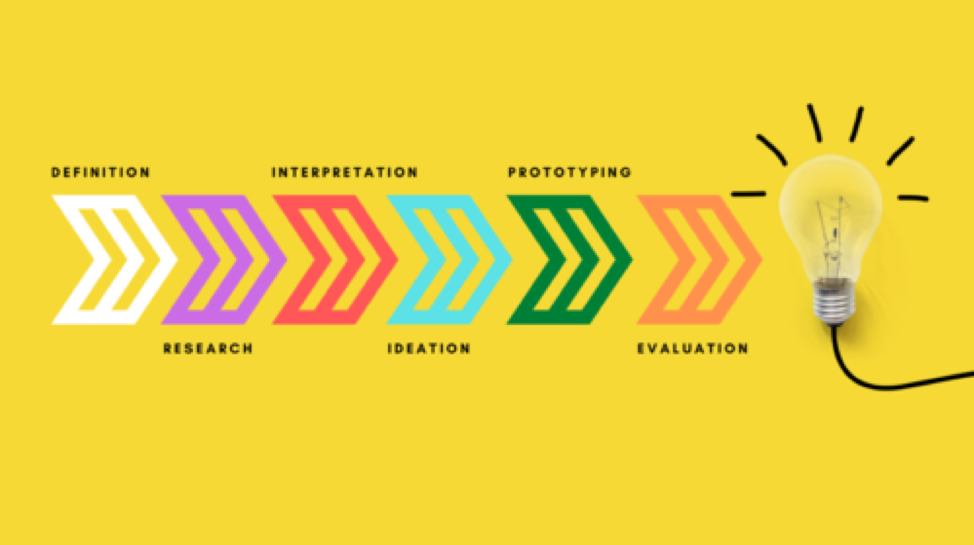
Article Series Part 6- Design Thinking Innovation: Digital Transformation Debts post-Covid-19
Editor’s Note: The DBizInstitute is excited to share this article, written by Dr. Setrag Khoshafian, with our community and in advance of his new book release. Keep an eye on our website as we share additional articles in the coming months written by Setrag, as well as a pending Meet the Author webcast to discuss his new book ‘How to Alleviate Digital Transformation Debt’ expected to air Fall 2021. This article was originally published on CognitiveWorld.com on November 1, 2020.










